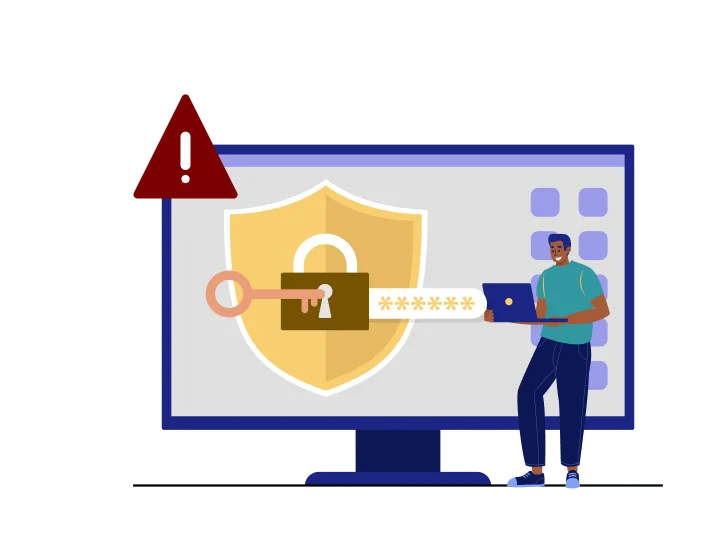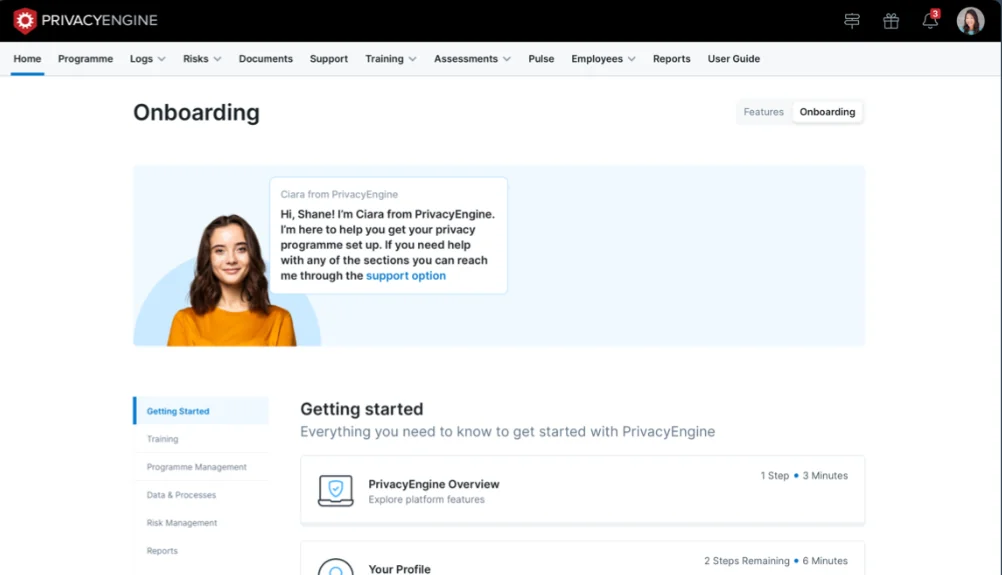Organizations constantly grapple with the risk of cyber-attacks and security breaches, challenges that can cause profound damage to their reputation, customer trust, and financial health. The need for an effective incident response solution is more critical than ever. It’s not just about reacting to threats; it’s about being prepared to identify, contain, and remediate them efficiently and effectively. By implementing robust incident response strategies, organizations can demonstrate their commitment to safeguarding data, maintaining customer trust, and upholding their reputation. This proactive stance is key to thriving in a world where digital threats are an ever-present reality.
Bonus Content: Download this blog post!
Understanding Incident Response Solutions
What is Incident Response?
Incident Response is a process of detecting, analyzing, containing, and eradicating security incidents before they cause significant damage to an organisation. It involves a set of procedures and protocols that an organisation follows in response to a security incident.
Organisations must be prepared to respond to security incidents promptly and effectively. A security incident can cause significant damage to an organisation’s reputation and financial stability. Therefore, it is essential to have a robust incident response plan in place.
The Importance of Incident Response in Organisations
It’s crucial to recognize just how vital an effective incident response solution is for any organization. In a world where threats like malware, phishing attacks, and ransomware are all too common, having a plan in place isn’t just a precaution—it’s a necessity. When a security breach occurs, the difference between a quick, well-managed response and a slow, ineffective one can be enormous. A rapid and effective approach can significantly lessen the impact of a breach, helping to quickly restore normal operations, protect the organization’s hard-earned reputation, and safeguard its financial health. In essence, a strong incident response is more than a technical requirement; it’s a key part of maintaining trust and resilience in an unpredictable digital environment.
Beyond the immediate benefits of threat mitigation, an effective incident response solution is instrumental in ensuring compliance with regulatory requirements. Numerous regulatory bodies mandate that organizations maintain a comprehensive incident response plan. This requirement underscores the importance of being prepared not just for the sake of operational continuity, but also to protect sensitive data and avert data breaches. Implementing such a plan demonstrates an organization’s commitment to data privacy and security, aligning with legal standards and fostering a culture of trust and reliability.
Key Components of an Effective Incident Response Solutions
An effective incident response solution consists of several key components:
Preparation: This involves developing incident response policies, identifying and assessing potential threats, training employees, and establishing communication channels and protocols. Organisations should conduct regular security awareness training for employees to ensure they understand their roles and responsibilities in the incident response process.
Identification: In this stage, incidents are detected and analysed to determine the threat level and potential damage. Organisations should have a system in place to monitor their networks for suspicious activity and alerts.
Containment: This involves isolating the affected systems to prevent further damage. Organisations should have a plan in place to contain the incident and prevent it from spreading to other systems.
Remediation: In this stage, the incident is eradicated, and the systems are restored to their original state. Organisations should have a plan in place to remove any malware or malicious code and restore data from backups if necessary.
Recovery: This stage involves bringing the affected systems back online and resuming normal operations. Organisations should conduct a post-incident review to identify any weaknesses in their incident response plan and make necessary improvements.
Having an effective incident response solution in place is critical for organisations to protect their sensitive data and maintain business continuity. By following the key components of an incident response plan, organisations can minimise the damage caused by a security incident and quickly resume normal operations.
Assessing Your Organisation’s Incident Response Needs
Incident response forms an essential pillar in the security strategy of any organization. This involves implementing a series of well-defined procedures and processes designed to manage and respond to security incidents in an effective manner. It’s about being prepared for the unexpected, having a clear plan to follow when security threats arise, and ensuring that the organization can handle these challenges with confidence and efficiency. This approach not only mitigates the risks associated with security incidents but also reinforces the organization’s commitment to protecting its data, assets, and reputation.
Identifying Potential Threats and Vulnerabilities
Initiating an organization’s incident response planning begins with identifying potential threats and vulnerabilities. These threats can originate from a diverse array of sources, such as cybercriminals, internal employees, and even natural disasters. Vulnerabilities, on the other hand, might be present in software, hardware, or within the organization’s physical infrastructure.
Conducting a comprehensive risk assessment is a critical step in pinpointing these potential threats and vulnerabilities. This process entails identifying assets that are crucial to the organization’s operations, determining the likelihood of a security incident occurring, and gauging the potential impact of such an incident.
A key aspect of the risk assessment process involves stakeholders from various departments within the organization, including IT, legal, and business units. This collaborative approach ensures that all potential risks are identified and assessed from multiple perspectives, leading to a more robust and comprehensive understanding of the organization’s security landscape. Such an inclusive strategy not only enhances the effectiveness of the incident response plan but also fosters a culture of shared responsibility and awareness regarding cybersecurity.
Evaluating Current Incident Response Capabilities
After identifying the risks, the next crucial step for an organization is to evaluate its current incident response capabilities. This evaluation process involves a thorough review of the organization’s existing incident response policies, procedures, and resources. It’s important to ensure that this assessment covers the entire incident response lifecycle, which spans from the initial detection of an incident to the final recovery phase.
This comprehensive evaluation should also take into account the organization’s preparedness to handle various types of incidents, such as malware infections, data breaches, and physical security incidents. The objective is to gain a clear understanding of how equipped the organization is to respond to different scenarios.
During this evaluation, it’s vital to identify any gaps or shortcomings in the organization’s incident response capabilities. Once these gaps are pinpointed, they should be prioritized based on their potential impact on the organization’s operations and assets. Addressing these gaps is essential for strengthening the organization’s overall security posture and ensuring that it is better prepared to handle potential security incidents effectively and efficiently.
Setting Incident Response Goals and Objectives
Following the risk assessment and evaluation of current capabilities, it’s important for an organization to establish realistic incident response goals and objectives. These should align with the organization’s broader mission, vision, and values, ensuring that the incident response strategy is in harmony with its overall objectives.
The goals set should adhere to the SMART criteria: Specific, Measurable, Achievable, Relevant, and Time-bound. This approach ensures that the goals are clear, quantifiable, realistic, pertinent to the organization’s needs, and have a defined timeline for achievement. Additionally, these goals should consider the organization’s available resources and the potential impact of security incidents on its operations and reputation.
Setting these incident response goals and objectives is a crucial step in guaranteeing that the organization is equipped to effectively handle security incidents. This strategic planning not only enhances the organization’s preparedness but also contributes to its resilience and ability to maintain operational continuity in the face of security challenges.
In summary, assessing an organization’s incident response needs is a fundamental component of its security strategy. By identifying potential threats and vulnerabilities, evaluating current response capabilities, and setting well-defined incident response goals, organizations can ensure they are adequately prepared to manage and respond to security incidents in an effective manner.
Download this blogpost!
Building Your Incident Response Team
As cyber-attacks become more sophisticated and frequent, it is crucial to have a well-trained and organised incident response team in place. This team plays a pivotal role in minimizing the damage caused by security breaches and ensuring a swift recovery. A robust incident response team is not just about having skilled individuals; it’s about creating a cohesive unit that can respond quickly and efficiently to a range of security challenges. This article will delve into the key elements necessary for building an effective incident response team, covering aspects such as team composition, skills required, training, communication strategies, and coordination mechanisms. By focusing on these elements, organizations can enhance their preparedness and resilience against cyber threats, ultimately protecting their assets, data, and reputation.
Roles and Responsibilities within the Team
An incident response team is a multifaceted group, each member playing a distinct yet interdependent role. This team typically includes an incident commander, technical specialists, communications specialists, and representatives for legal and public relations matters. The incident commander leads the charge, coordinating and managing the overall response effort. Technical specialists delve into the technical details, analyzing and containing the incident. Communications specialists are tasked with maintaining clear and effective communication with team members, stakeholders, and the public. Legal and public relations representatives handle the sensitive legal and public aspects of the incident.
Defining and understanding the roles and responsibilities of each team member is critical for ensuring effective collaboration and communication. It’s vital that every member of the team has a comprehensive understanding of their specific duties, as well as an awareness of the roles and responsibilities of their colleagues. This clarity is essential for fostering a cohesive and efficient response effort, where each member knows exactly what is expected of them and how their actions fit into the broader response strategy. By achieving this level of organization and understanding, the incident response team is better equipped to handle security incidents promptly and effectively.
Training and Skill Development for Team Members
To build an effective incident response team, it’s essential to invest in appropriate training and skill development for each team member. The cyber threat landscape is constantly evolving, making it crucial for team members to stay up-to-date with the latest technologies, practices, and trends in cybersecurity. This can be achieved through ongoing training and skill-building opportunities.
Key areas of focus for training should include incident response procedures, threat intelligence, forensic analysis, and other relevant domains. It’s not enough to simply provide initial training; continuous learning and skill enhancement are crucial to maintaining a high level of preparedness against new and emerging threats.
Additionally, practical exercises such as regular tabletop simulations play a critical role in honing the team’s skills. These exercises provide a safe environment to test response strategies, identify potential weaknesses, and improve overall response capabilities. By regularly participating in these simulations, team members can refine their skills, enhance team coordination, and ensure they are ready to respond effectively to real-world cybersecurity challenges.
In summary, continuous training and skill development are key to ensuring that an incident response team remains capable, agile, and effective in the face of evolving cybersecurity threats and challenges.




